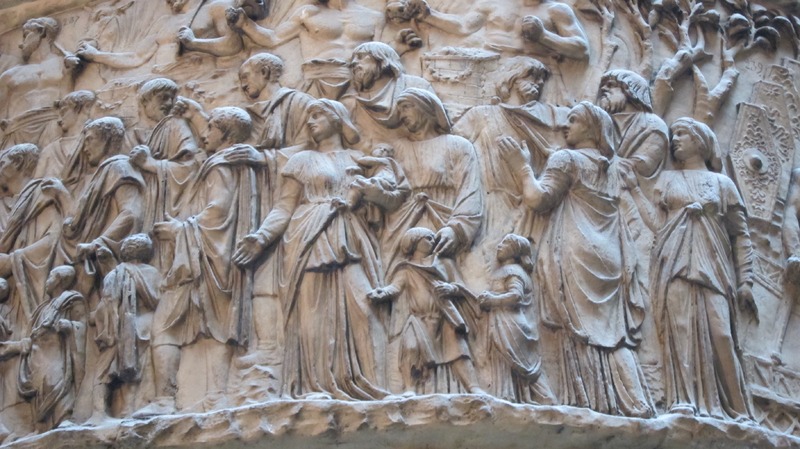Women on the Frontier
Another interesting scene including depictions of women is one in which a group attends a sacrifice by the emperor on the Dacian frontier.1 Much of this scene is similar to other depictions of non-Roman women elsewhere on the column. The women appear with their children and are identifiable as non-Roman by their distinct clothing; they wear a long-sleeved dress under a tunic that was belted, and they wear head coverings. Notably, although the clothing is distinctly foreign, it is somewhat similar to the clothing worn by Roman women. While certain differences in the drapery and style of the garments suggest that the women may be of different ethnicities, the most certain interpretation is that they are not Roman.
The women in this scene, and more generally on the Column for Trajan, tend to be dressed quite modestly and this coupled with the emphasis on their roles as mothers may further the version of war that Trajan’s column was trying to convey. On the column, the war against the Dacians was made to seem less violent and disruptive than it likely was. Thus, the depiction of modest, motherly foreign women dressed similarly to Romans and attending a sacrificial religious ceremony performed by the emperor reinforced the idea that perhaps the war may have been good for the non-Roman people that the Romans conquered, especially those near the frontier.
1. Sheila Dillon, “Women on the Columns of Trajan and Marcus Aurelius and the Visual Language of Roman Victory,” in Representations of War in Ancient Rome, eds. Sheila Dillon and Katherine E. Welch (Cambridge: Cambridge University Press, 2006), 244-271.
